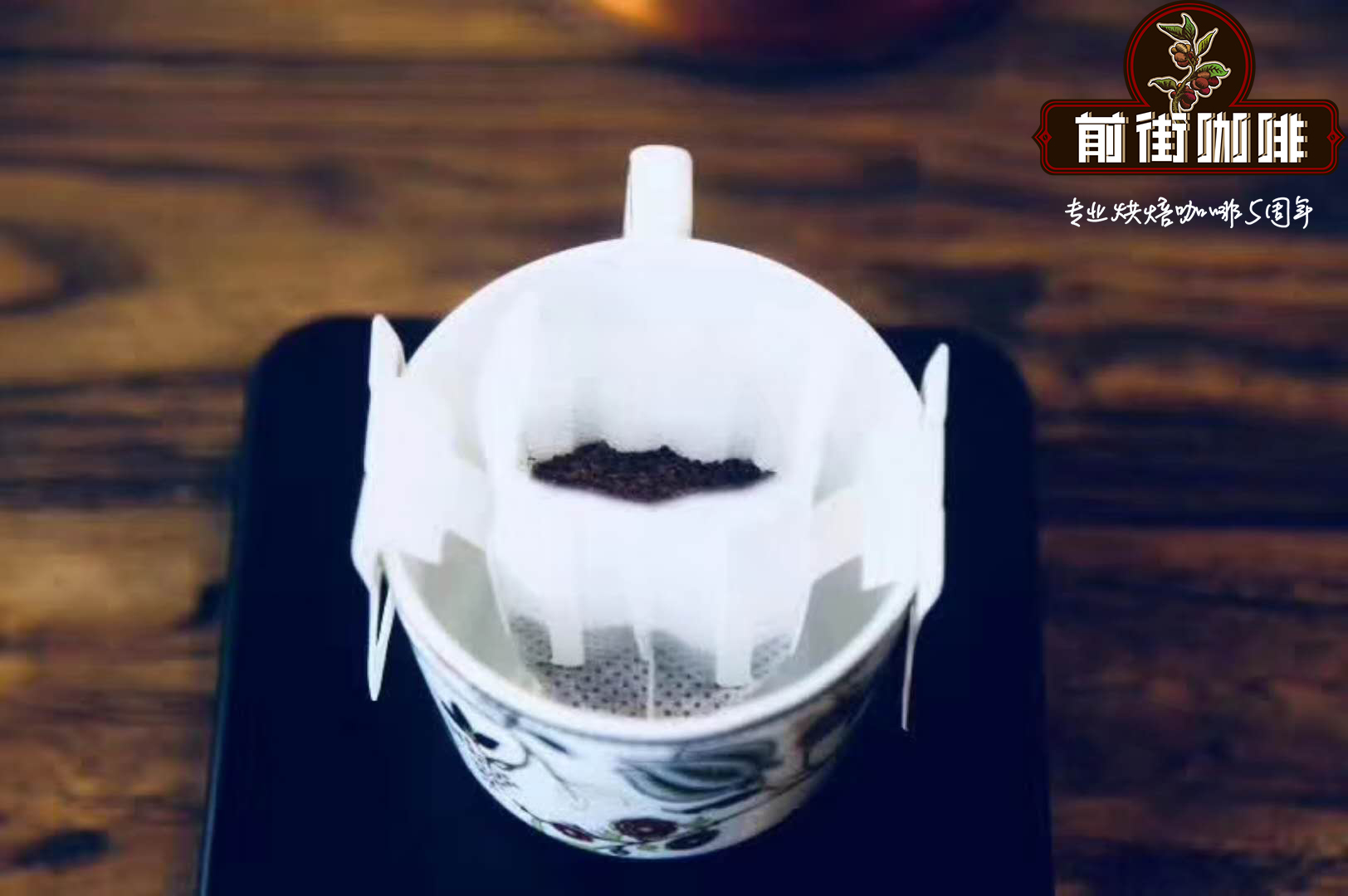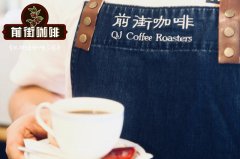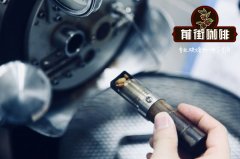The water injection skills of your own hand-made coffee series? Hand-brewing coffee step diagram hand-flushing water injection technique

Professional coffee knowledge exchange more coffee bean information please follow the coffee workshop (Wechat official account cafe_style)
The water injection skills of your own hand-made coffee series? What are the steps for making coffee by hand?
Since instant coffee powder does not need to separate dregs, it all depends on the number of teaspoons of coffee powder. By contrast, the public will find the hand-brewed coffee to be filtered complicated and complicated. In fact, each packet of coffee beans, only need to find a suitable thick young degree, and then brew, can be as simple as watering flowers.
18g coffee powder mixed with 300ml water
The most common method is to extract 18 grams of coffee powder in a ratio of about 300 milliliters of water. First of all, 30 to 40 milliliters of water are injected into the middle of the funnel. after 20 to 30 seconds of "steaming" (I still don't understand why this action is called steaming), divide it into three to four sections, each with 60 to 80 milliliters, and inject the rest of the water. The whole process will be completed in two to three minutes. In the meantime, avoid wetting the filter paper without coffee powder, otherwise water will be lost from the channel formed by the periphery of pressed powder.
Another kind of more difficult to use, is in the limited time (usually in two minutes) keep making a circle to inject water, until the end of the 300ml "continuous water method". Beginners often "live and live" and inject water too slowly, or they are afraid that the current will be interrupted and it will be finished too soon. All kinds of hand-punching pots, that is, the thick young (flow control) for the water column, came into being.
The Taiwanese translation book "Talent starts a course and teaches you how to make good Coffee" brings together the brewing methods of more than 20 coffee shops in Japan. Many people follow the guidelines in the book, but the taste of coffee is worse, and some readers find the suggestions in the book varied and difficult to understand. As a matter of fact, what is described in this book is just like a martial arts novel, which only has the style and lacks the formula. According to the picture and practice, only its shape but lack of reality.
It is easier to make coffee than to practice martial arts, and the so-called formula is only one sentence: "taste it, but don't overdo it."
"smell it, but don't overdo it."
What sounds easy and natural, there are thousands of ways to do it. The gesture of pouring water and making a circle can be divided into counterclockwise, large and small circles, making a cross, drawing an M, and so on. In fact, whether it is a picture symbol or a "gluttonous snake", you can inject water into a coffee pressed powder in the hope of washing out the taste of each powder. Metaphorically, the coffee powder in the funnel is like a tea bag in a bathtub. We pour water with a hose in the hope that each tea bag will taste evenly together. To do this, you must first wet all the tea bags at the same time. This is the goal of the first water injection (or "stuffy steam" at all).
However, if you look at the funnel with a microscope, you will find that the size of the coffee powder is different. It is equivalent to the tea bag in the bathtub, some as big as rice dumplings and some as thin as dumplings. Even if the extraction starts at the same starting line, by the time the big one tastes enough, the thin one has gone too far (excessive extraction). In order to avoid this phenomenon, apart from high-quality bean grinders, we can only use water to pull larger coffee grains to taste as soon as possible before the fine powder is over-extracted. So when the second water injection begins, the impact is very important.
But what happens if you rush too hard? Apart from running out of water too quickly, resulting in insufficient extraction time, some of the water will flow away with the cracks in the pressed powder or the edge of the funnel, both of which will lead to the weak taste of the coffee and the imbalance between sour and bitter.
Detailed steps and precautions for making coffee by hand:
Ground coffee beans: the standard particle size is like No. 2 sugar, can be adjusted, the key point is to uniform particles, you can use a sieve to sift out the ultra-fine powder to avoid being unable to filter. The amount of coffee powder is about half to 2/3 of the filter cup, too little can not control the flow rate of hot water, too much will be full when flushing.
Boiled water: the standard ratio of powder to water is about 1:15, which can also be adjusted according to personal preference. The suitable water temperature is about 90 degrees, which can be measured with a thermometer after boiling.
Preheating: fold the filter paper so that it is flat on the filter cup, soak the filter paper with some hot water and preheat the filter cup, which can also eliminate the smell of the filter paper. Pour out the water after preheating.
Powder: pour the coffee powder into the filter cup and pat the side of the filter cup to make the coffee powder surface slightly flat.
Start timing, first water injection: put the spout near the edge of the filter cup, start injecting water from the center of the filter cup, go around the center to the periphery and then back to the center, soak all the coffee powder and then stop, be careful not to have too much water. At this time, the surface of the coffee powder will produce white bubbles and begin to expand.
Steaming: wait for the coffee powder to stop expanding for about 30 Murray 40 seconds, by which time some extract may have begun to filter out.
Second water injection: when you see the foam begin to collapse, start the second water injection, just like repeat the circle from the center and continue to inject water evenly. This water injection process takes more than 2 minutes, depending on the expected cooking time (it is generally recommended that deep-roasted coffee beans range from 2 to 2 and a half minutes and shallow roasted coffee beans for 2 and a half minutes to 3 minutes).
Rest: after stopping filling, wait for 20-60 seconds to filter, and then pour the coffee into the coffee cup.
Important Notice :
前街咖啡 FrontStreet Coffee has moved to new addredd:
FrontStreet Coffee Address: 315,Donghua East Road,GuangZhou
Tel:020 38364473
- Prev

Introduction to the flavor characteristics of H 290 + Juliet treated with 90 + Juliet geisha honey
Professional coffee knowledge exchange more coffee bean information please follow the coffee workshop (Wechat official account cafe_style) Ninety Plus Juliette H2 90 + Juliet geisha honey treatment H2 country: Panama name: 90 + Juliet H2 producing area: Silla Del Pando, Volcan level: H2 L39 altitude: 1250 1650m varieties: Geisha Packaging: 30KG
- Next

Basic knowledge of hand-made coffee what do you mean, hand-made coffee? what do you prepare?
Professional coffee knowledge exchange more coffee bean information please follow the coffee workshop (Wechat official account cafe_style) the basic knowledge of hand-brewed coffee? What does it mean to make coffee by hand? What do you need for hand-made coffee? Hand-brewed coffee, as the name implies, is to pour hot water on the coffee powder and extract the coffee through filter paper and filter cup. the whole brewing process is about 3 to 4 minutes. Due to the flow of hot water
Related
- Detailed explanation of Jadeite planting Land in Panamanian Jadeite Manor introduction to the grading system of Jadeite competitive bidding, Red bid, Green bid and Rose Summer
- Story of Coffee planting in Brenka region of Costa Rica Stonehenge Manor anaerobic heavy honey treatment of flavor mouth
- What's on the barrel of Blue Mountain Coffee beans?
- Can American coffee also pull flowers? How to use hot American style to pull out a good-looking pattern?
- Can you make a cold extract with coffee beans? What is the right proportion for cold-extracted coffee formula?
- Indonesian PWN Gold Mandrine Coffee Origin Features Flavor How to Chong? Mandolin coffee is American.
- A brief introduction to the flavor characteristics of Brazilian yellow bourbon coffee beans
- What is the effect of different water quality on the flavor of cold-extracted coffee? What kind of water is best for brewing coffee?
- Why do you think of Rose Summer whenever you mention Panamanian coffee?
- Introduction to the characteristics of authentic blue mountain coffee bean producing areas? What is the CIB Coffee Authority in Jamaica?

